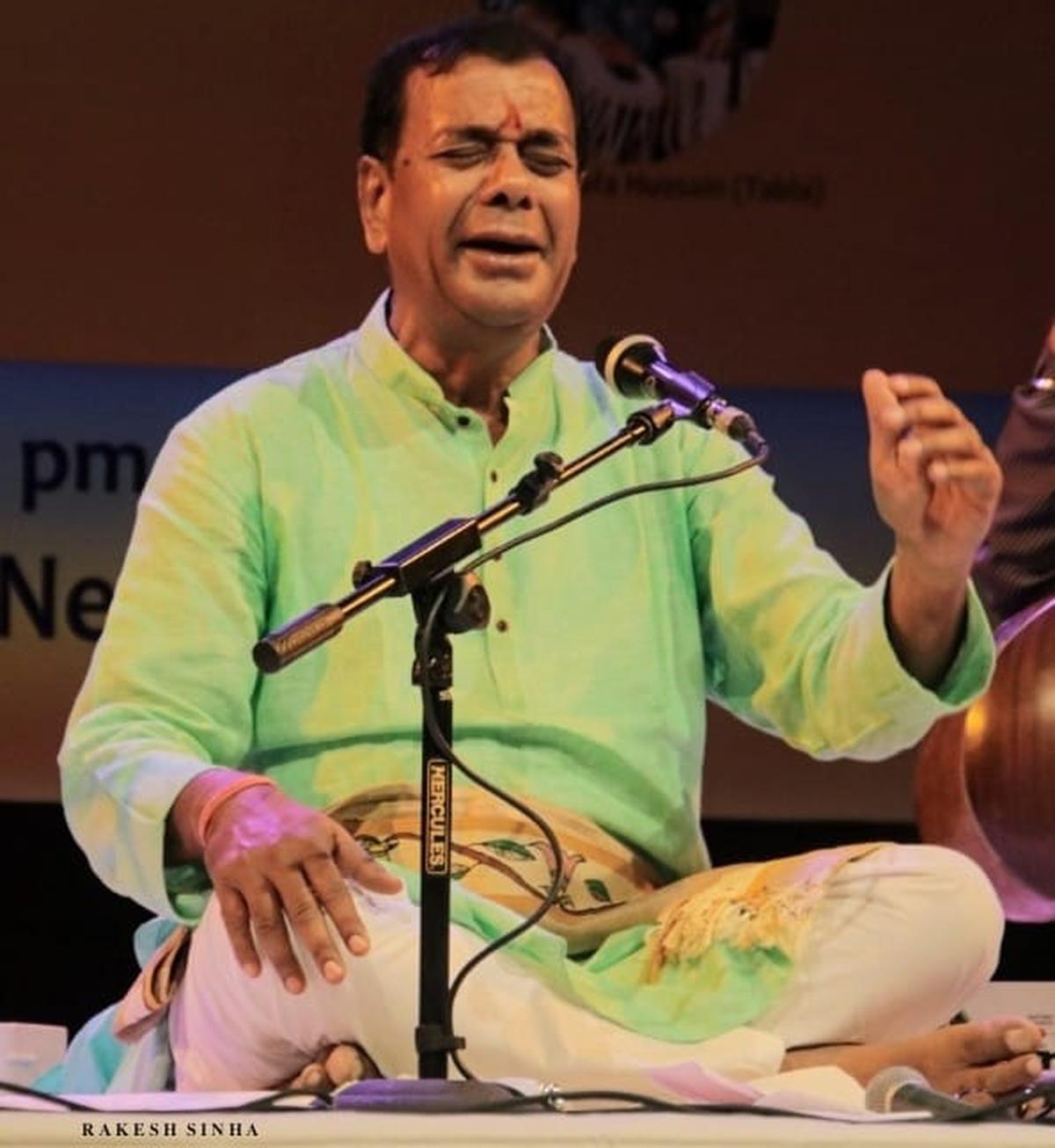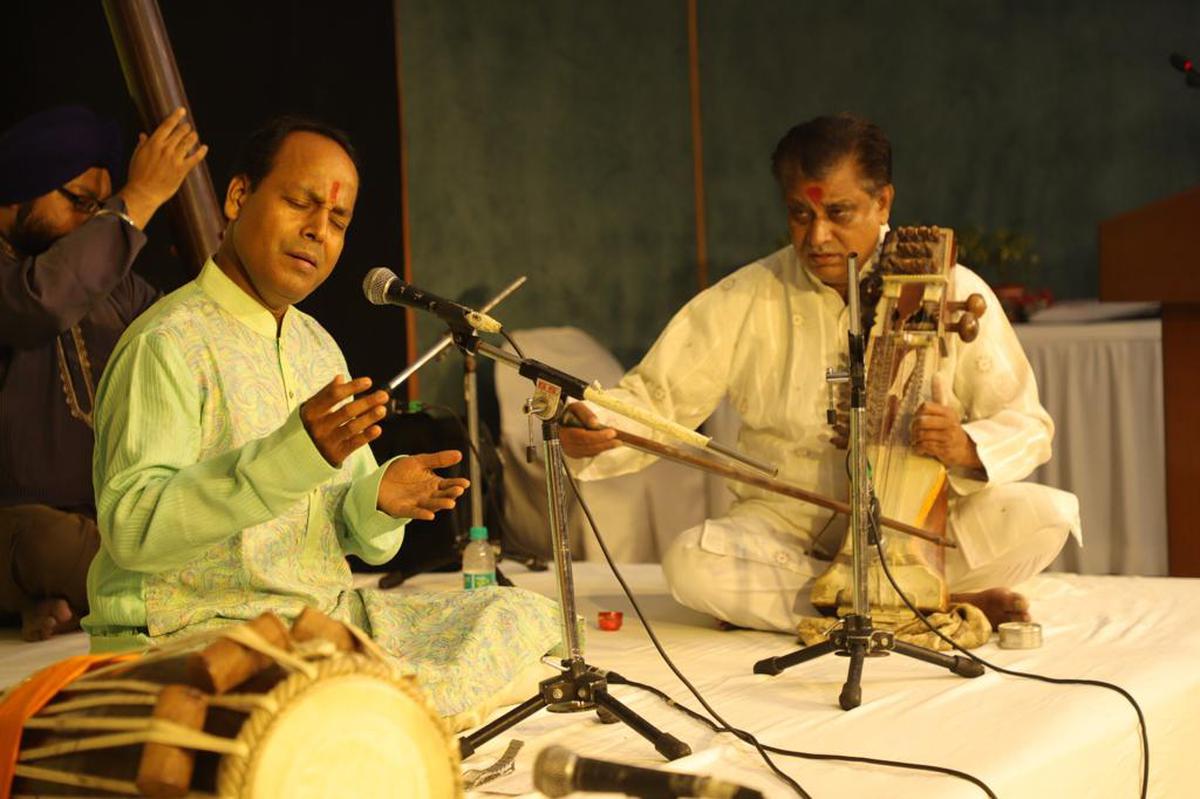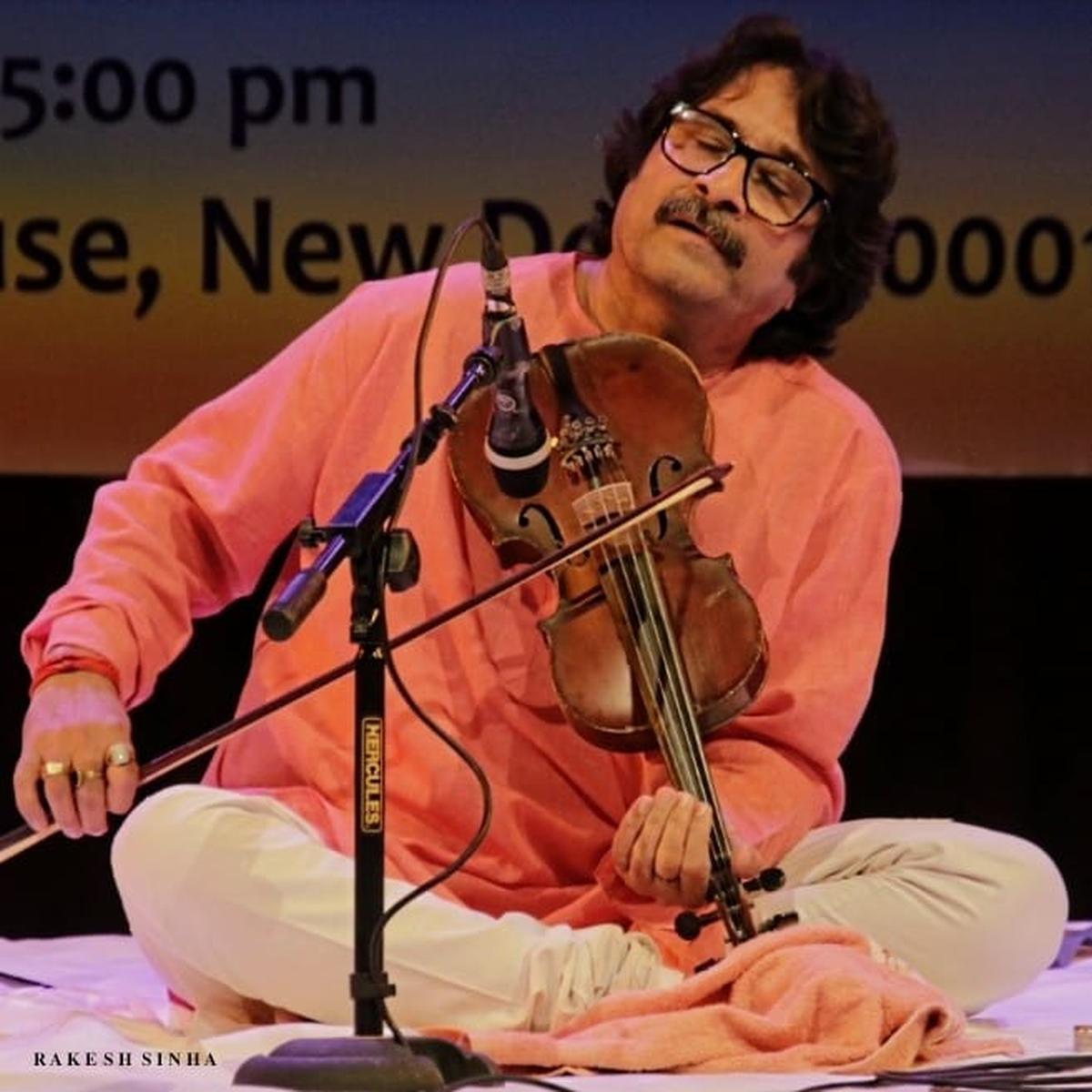Primarily spiritual in nature, dhrupad is the most pristine form of Hindustani music. A combination of swar, taal, and pada, it began to be sung during the time of Raja Mansingh Tomar. The swar-vistar (melodic elaboration) is done during the detailed alap and the laya-vistar (rhythmic elaboration) through delineation of the pada that are dhrupad/ dhamar compositions. with melody, proper diction, and a variety of layakari in the given taal.
Historically associated with temples, dhrupad later was also performed in the courts of kings and in the houses of patrons. The compositions of the temple tradition gave importance to the lyrical content with devotional padas addressed to the deity of the temple or sung on religious festivals. The court music emphasised the intrinsic musical aspects such as alap and layakari as an important part of the dhrupad performance. Later, the style of presentation on the stage focused on the musician’s creativity and ability to improvise.
Madhu Bhatt Tailang
There have been four banis of dhrupad that categorise distinctive stylistic idioms with specific musical characteristics. These are inspired by the five ancient geetis of Prbandhas namely Shuddha, Bhinna, Besara, Gaudi, and Sadharani; distinguished according to their aesthetic approach, mood, or rasa. Gobarhar, Gauhari, or Gaudi Bani, for instance, is inspired by the Shuddha Geeti, which is characterised by long meend between two swaras or letters in a very artistic manner. Serenity being the main characteristic of this bani, the subject matter or the compositional text of this bani is anything but frivolous, and the layakari is almost absent.
Nauhar Bani evoked Adbhut rasa, with jumps from one note to another. The tempo of its rendition was comparatively faster and the scope of rhythmic variations was limited. Khandar Bani evokes Veer rasa. The beauty of this bani comes from the gamaka or oscillation of notes. The Dagur Bani has a combination of Bhakti and Shringar rasas. Its simple compositions are widely sung.
There is a popular saying that tries to distinguish each of the four banis in a simple way — Jor jor se khandar bole (Khandar bani has a forceful expression), madhur suran ko nauhar leve (Nauhar bani has delicate expression), saans badi hai gauhar ki (Gauhar bani is characterised by long breath), alaapchaari hai dagur ki (alap is the mainstay of Dagur bani).
Inspired by the characteristics of these four banis emerged different gharanas of dhrupad, emphasising one or more than one of these elements.
Patronised by the royal court of Darbhanga state, Darbhanga Gharana is one of the oldest existing traditions of dhrupad. Inspired by the Khandar Bani that evokes Veer Rasa, it is a ‘gamak-pradhan’ style that includes quick gamakas as well as the use of subtle meends (oscillations). The main feature is the use of gamaks in different khand (sections) and layakari. The Darbhanga tradition also follows a four-part alapchari. A variety of gamaks are used in the third section of alap with special emphasis on rhythmic patterns and tihai because in Khandar Bani the element of khand (division) is seen not only in layakari associated with the composition but also during the alap section.

Pt. Jagat Narayan
Mallicks of the Darbhanga Gharana have adorned the royal courts of many kings of Darbhanga. The Mallick lineage came into existence in the 18th century with two brothers — Pt. Radhakrishna Mallick and Pt. Kartaram Mallick. Around 1745, the two brothers went to study dhrupad under Ustad Bhupat Khan, who hailed from Tansen’s lineage and adorned the court of Nawab Shujauddaula of Awadh. After grooming them for 30 years when the Ustad presented his shagirds in the court of the nawab, one of the invitees was Maharaja Darbar Singh of Darbhanga. After listening to their singing, he invited the brothers to become his court musicians.
Darbhanga Gharana of dhrupad is one of the oldest existing traditions of dhrupad. Apart from the court musicians like Pt. Kshitipal Mallick, the prominent exponents of Darbhanga gharana include pakhawaj and rudra-veena players. Pt. Ramashish Pathak has been a famous pakhawaj player, similarly, Nihal Mallick was a rudra-veena player. Pt. Kshitipal Mallick’s disciple Rajitram Mallick wrote books like Bhaktavinod and Ragratnakar documenting hundreds of compositions with detailed notes. His son and disciple Pt. Ramchatur Mallick, along with the Dagar Brothers made a huge contribution to revive, enrich and propagate dhrupad in recent times.

Pt. Prabhakar Pathak Mallick
Music lovers were exposed to the nuances of Darbhanga Gharana Dhrupad at two Dhrupad Festivals held at separate venues in Delhi recently. Pt. Kshitipal Mallick Dhrupad Festival- 2023 was held at Triveni Kala Sangam and the 30th Shraddhanjali Samaroh in memory of Pt. Narhari Pathak Mallick, another dhrupad maestro of the gharana, was held at the Habitat Centre. Pt. Narhari was the grandson and disciple of Pt. Kshitipal Mallick.
The Shraddhanjali Samaroh opened with the dhrupad recital of Pt. Prabhakar Pathak Mallick, who presented a dhamar in raag Desh and a self-composed Drut Sooltaal bandish in raag Miyan Malhar adorned with gamakas, especially the Humphit gamak. The opening alap in raag Des was elaborate, intact with the four parts of a dhrupad alapchari, strictly followed by the practitioners of this gharana. But one wished he had begun with Miyan Malhar, a raag that lends itself beautifully to an expansive alap, and then proceeded to Desh for the second piece. Pt. Prabhakar did prove himself as an accomplished representative of the gharana tradition. The festival also featured vocalist Pt. Bhola Nath Mishra, who presented khayal and thumri.
The Pt. Kshtitipal Mallick Festival included performances by Pt. Jagat Narayan Mallick from Patna and Madhu Bhatt Tailang from Jaipur. Pt. Jagat Narayan, who belongs to the Pt. Kshitipal Mallick musical lineage, opened with aalap and dhrupad in raag Madhuvanti. Elaborating the dhrupad-alap in the lower octave, his reach up to the mandra shadja was commendable. The Dhrupad composition, ‘Dhan dhan tero roop-yauvan’ by Tansen was followed by a Sooltaal bandish in Bhup-Kalyan.
Madhu Bhatt Tailang presented raag Parameshwari, created by Pt. Ravi Shankar with a four-part alap. The dhyan-shloka presented as the Mangalacharan served as the first part of the detailed alap with ’Dhuran-Muran’ and other kinds of gamakas including the Vedic mantra ‘Tanme manah Shiva-sankalpamastu’. The Dhamar composition, ‘Aaj padharo shri maai’ was followed by a composition set to the rare Padmavati taal of 13 beats cycle. Then came a Sooltala composition incorporating the nine names of Durga. Madhu Madhu concluded with a Ragamala composition starting and ending with Bhairavi. She regaled the audience weaving together Durga, Narayani, Saraswati, Shri, Vaageeshwari, Rageshwari, Parameshwari, Hamsadhwani, and Kalavati into a garland of raags.

Santosh Nahar
Manmohan Naik on the pakhawaj and Ghanashyam Sisodia on the sarangi accompanied the dhrupad singers at both the festivals. To bring in some variety, there was a violin recital by Santosh Nahar, who played raag Vachaspati, a Purabi dhun, and thumri accompanied on the tabla by Mustafa Hussain.